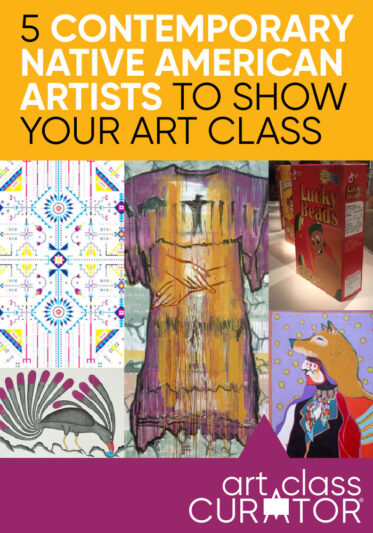Explore these five diverse and thought-provoking Native American contemporary artists with your students. From using bold color and traditional imagery to using humor to make a powerful statement, these artists are perfect to introduce to your students for Native American Heritage month art.
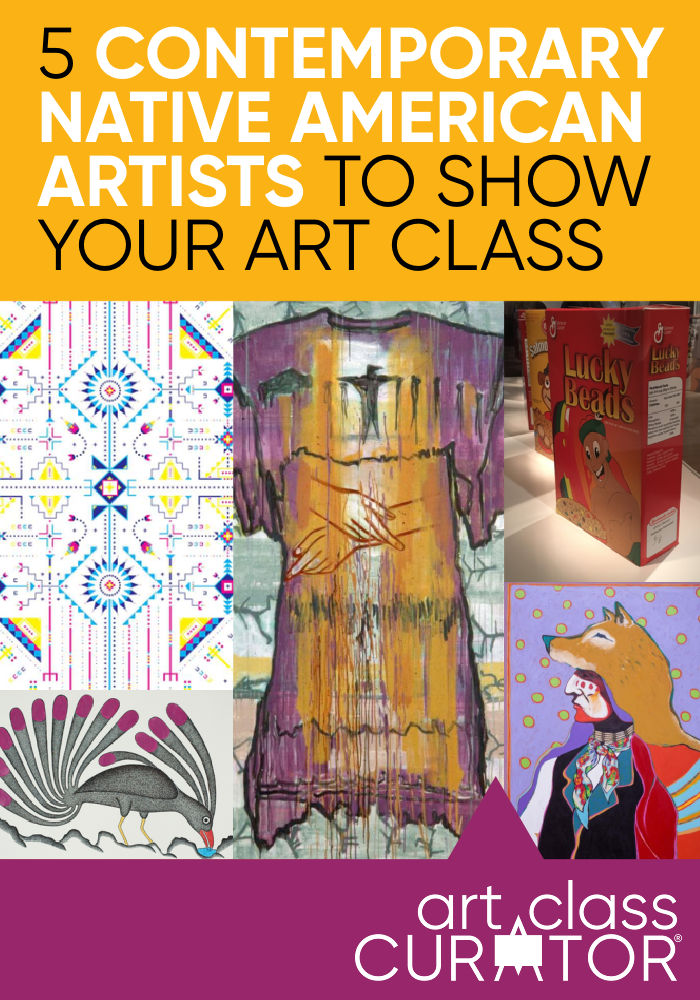
On terminology for this blog post: I have used “Native American Artists” as the headline for this post because that is the most searched for phrase online. The artists below live(d) in either the United States or Canada and are identified in the text by their tribal affiliation. For more information on tips for using appropriate terminology, check out this resource with lesson plans from the National Museum of the American Indian.
Kenojuak Ashevak
Cultural Affiliation: Inuit (Canada)
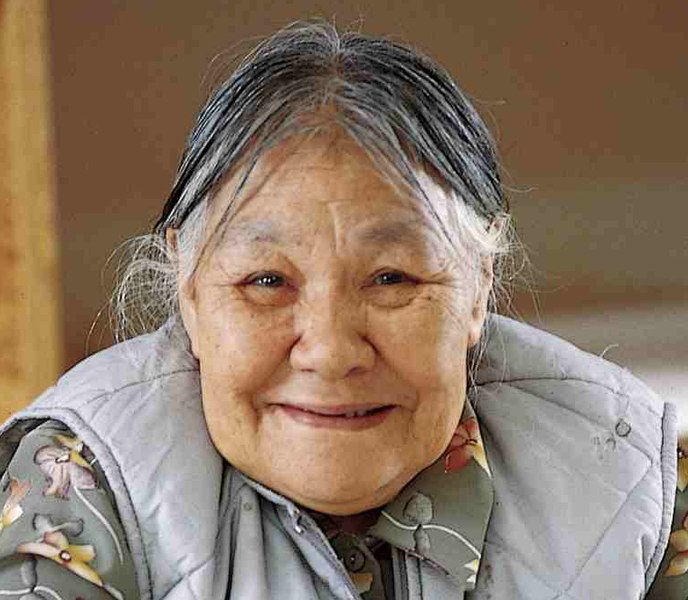
Born in an igloo in 1927, Ashevak became one of Canada’s most awarded and celebrated artists. She grew up traveling from camp to camp in south Baffin and Arctic Quebec. In the 1950s, she began experimenting with carving and drawing alongside her husband, Jonniebo. They continued making art together until he died in 1966. Her work has been featured on three postage stamps, and Kenojuak was an ambassador for Inuit art throughout her life. She traveled around the world to attend exhibitions of Inuit art. The artist died in 2013.
There is no word for art. We say it is to transfer something from the real to the unreal. I am an owl, and I am a happy owl. I like to make people happy and everything happy. I am the light of happiness, and I am a dancing owl.
Kenojuak Ashevak
Kenojuak Ashevak Art
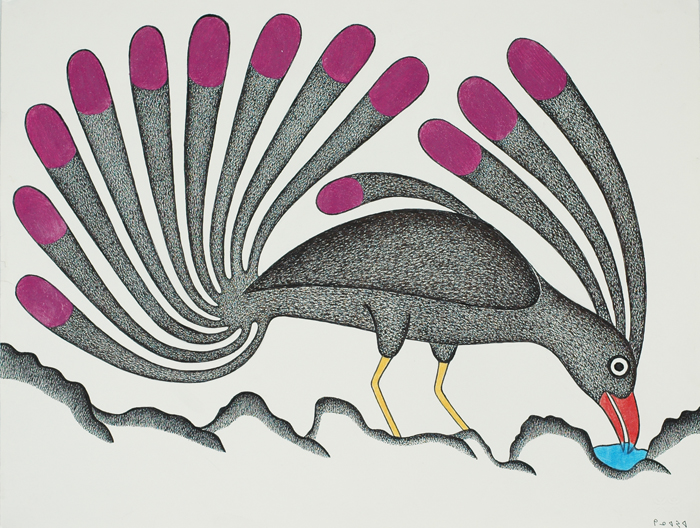
When asked why she drew many of her images, she responded, “I don’t know.” Her husband said, “the spirits must have whispered in her ears. (“Eskimo Artist: Kenojuak” film, 1961)” Ashevak said this about her creations. “I just take these things out of my thoughts and out of my imagination, and I don’t really give any weight to the idea of its being an image of something… I am just concentrating on placing it down on paper in a way that is pleasing to my own eye, whether it has anything to do with subjective reality or not. And that is how I have always tried to make my images, and that is still how I do it, and I haven’t really thought about it any other way than that. That is just my style and is the way I started and the way I am today.” (Source)
- A lesson on Kenojuak Ashevak’s Untitled is available in the Curated Connections Library. Members, get the lesson here. Or, click here to join.
- See more Kenojuak Ashevak art on Dorset Fine Arts.
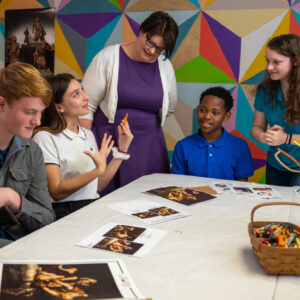
Get the Full Lesson!
This Lesson is in The Curated Connections Library!
Find the full lesson from this post along with hundreds of other art teaching resources and trainings in the Curated Connections Library. Click here for more information about how to join or enter your email below for a free SPARKworks lesson from the membership!
Sonny Assu
Cultural Affiliation: Ligwiłda’xw Of The Kwakwaka’wakw Nations based in ƛam̓atax̌ʷ (Campbell River, B.C.)
Sonny Assu is an interdisciplinary artist who discovered his Kwakwaka’wakw heritage at the age of 8. Later in life, the discovery of this heritage became the focus of his art and helped develop the unique practice that he is known for across Canada. His work has been accepted into galleries and museums, as well as public and private collections across Canada, the US, and the UK. According to the biography on his website, “Assu explores multiple mediums and materials to negotiate western and Kwakwaka’wakw principles of art-making. Often autobiographical, humorous, solemn and/or political, his diverse practice deals with the realities of being Indigenous in the colonial state of Canada.”
The impetus behind my work is to bring to light the dark, hidden history of Canada’s actions/inactions against the Indigenous people. I often infuse my work with wry humor in an attempt to foster a dialogue; to speak to the realities of being an Indigenous person in the colonial state of Canada. Within this, my work deals with the loss of language, loss of cultural resources and the effects of colonization upon the Indigenous people of North America. (Source)
Sonny Assu
Sony Assu Art

From the Seattle Art Museum Blog: “In this work of art by Sonny Assu, called Breakfast Series, we are initially confronted by the familiar colorful cereal boxes of our youth, luring us with their smiling animal mascots promoting sugar-laden cereals. Upon closer inspection, we see that Assu has turned the pop art inspired graphics on the five boxes into commentaries about highly charged issues for First Nations people—such as the environment, land claims, and treaty rights.”
- A lesson on Sonny Assu’s Breakfast Series is available in the Curated Connections Library. Members, get the lesson here. Or, click here to join to get this and other lessons on other contemporary Native American artists.
- See more Sonny Assu art on his website.
T.C. Cannon
Cultural Affiliation: enrolled member of Kiowa Tribe with Caddo ancestry, Oklahoma (USA)
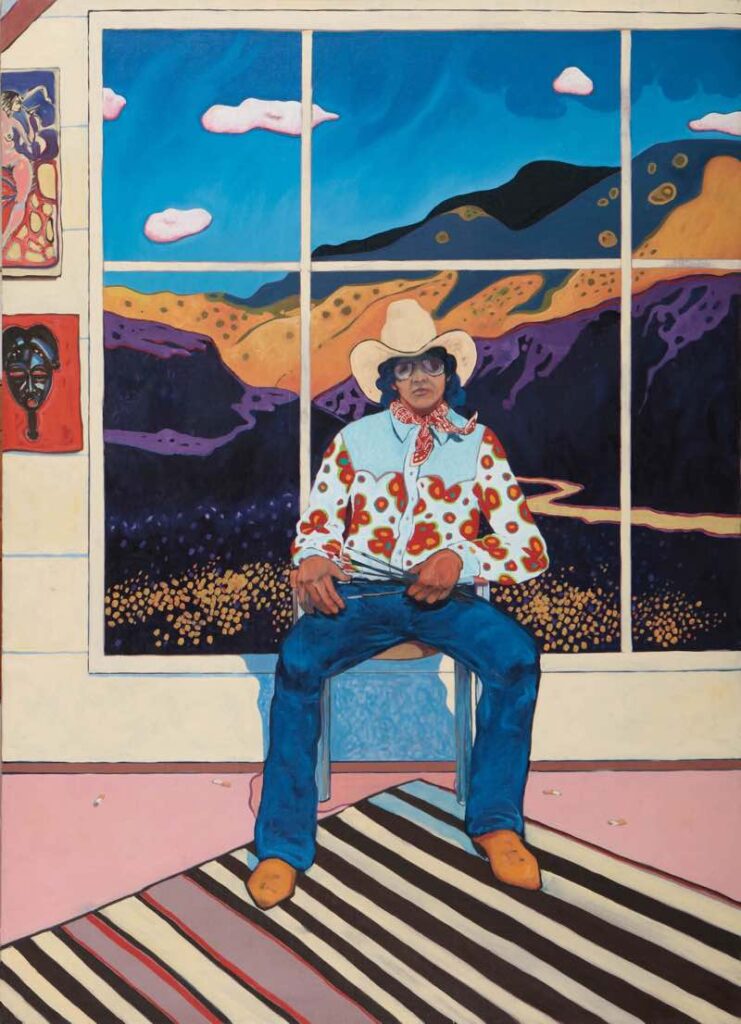
T.C. Cannon remains one of the most influential, talented, and innovative Native American artists of the 20th century. Born Tommy Wayne Cannon in Oklahoma, He was given the name Pai-doung-u-day, which means “One Who Stands in the Sun.” He is of Caddo, Kiowa, and Choctaw heritage. He attended the Institute of American Indian Artists in Santa Fe, New Mexico, and briefly attended the San Francisco Art Institute before quitting to join the army. His life was cut short by a car accident. However, he left behind many artworks and writings which continue to inspire to inspire artists today.
My determined eye, my resolute heart, my singular searching soul… all have windows from which I watch endlessly.
T.C. Cannon
T.C. Cannon Art
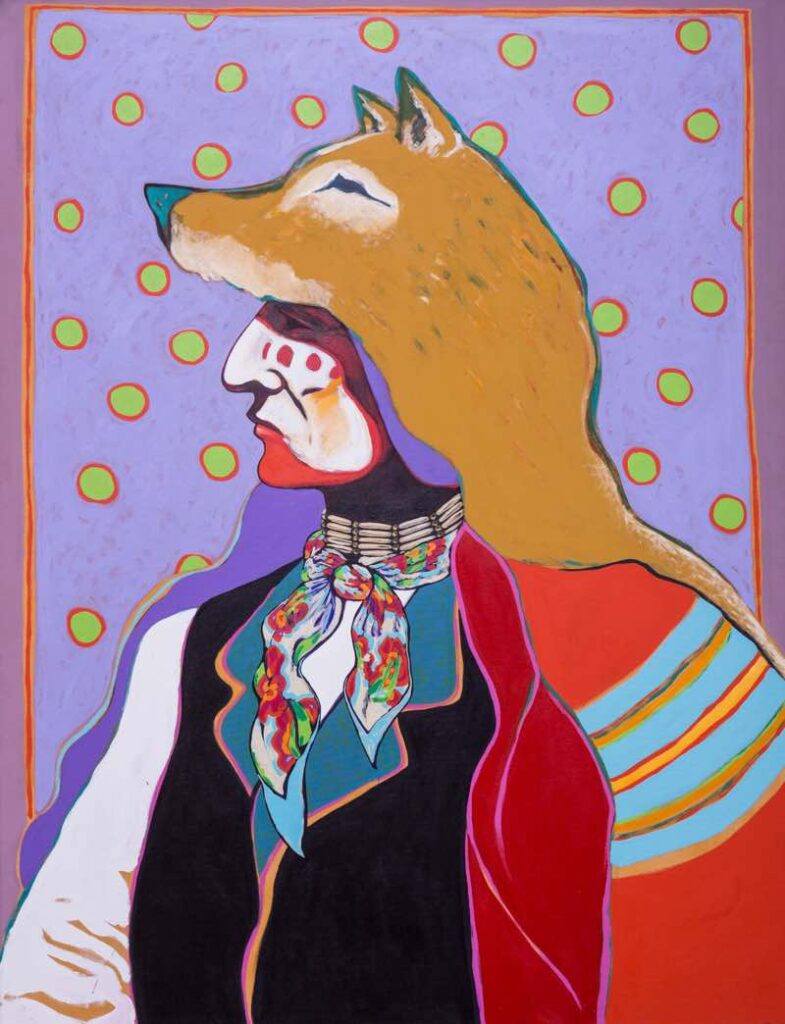
TC Cannon’s personal style of contemporary art is often humorous. It incorporates “old traditional” art into the “new world,” mixing European and American painting styles with Native American culture. He used vibrant colors across his artworks. It could be thought that Cannon does this as if not to allow his subjects to fade into history.
- A lesson on T.C. Cannon’s His Hair Flows Like a River is available in the Curated Connections Library. Members, get the lesson here. Or, click here to join to get this and other lessons on other contemporary Native American artists.
- See more T.C. Cannon art on the Peabody Essex Museum’s website.
Jaune Quick-To-See Smith
Cultural Affiliation: Enrolled Salish member of the Confederated Salish and Kootenai Nation, Montana, USA
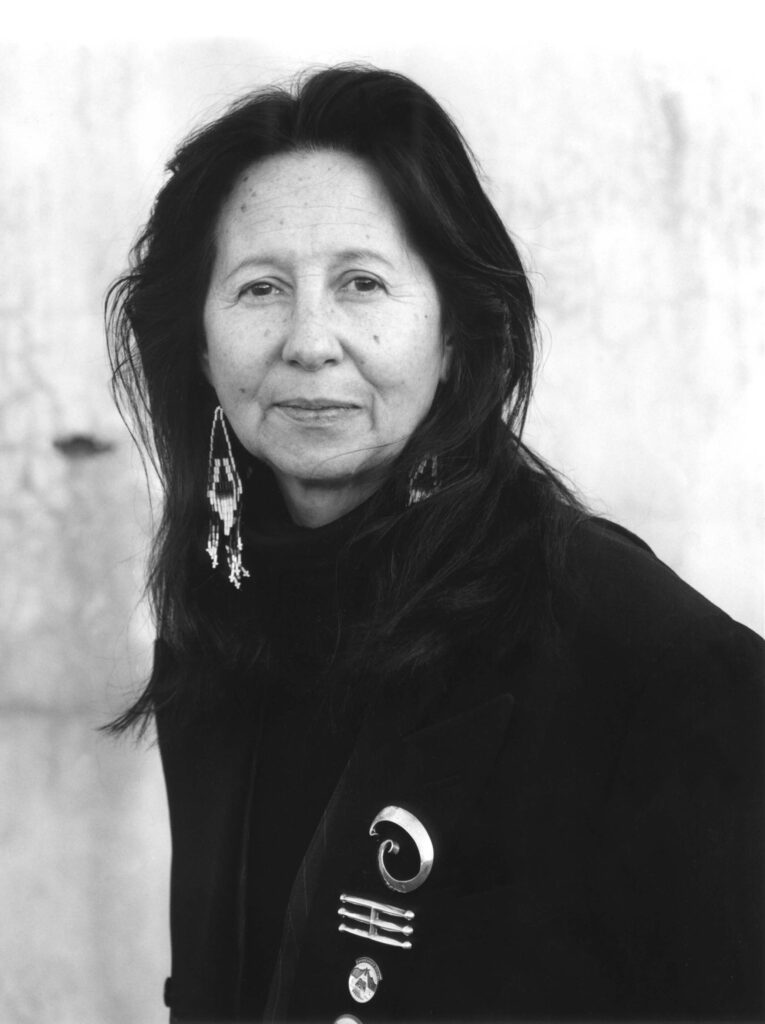
In her biography, Smith refers to herself as “a cultural arts worker,” which can be seen in her artwork. According to the Smithsonian American Art Museum, “Smith is part of the new generation of Native American artists who are helping to redefine their culture’s relationship to contemporary American life and its problematic past.” She is one of the most acclaimed Native American artists today and has been the recipient of a number of awards, including four honorary doctorates. Her art is a part of museum collections around the world.
Art should reveal the unknown, to those who lack the experience of seeing it.
Jaune Quick-to-See Smith
Jaune Quick-to-See Smith Art
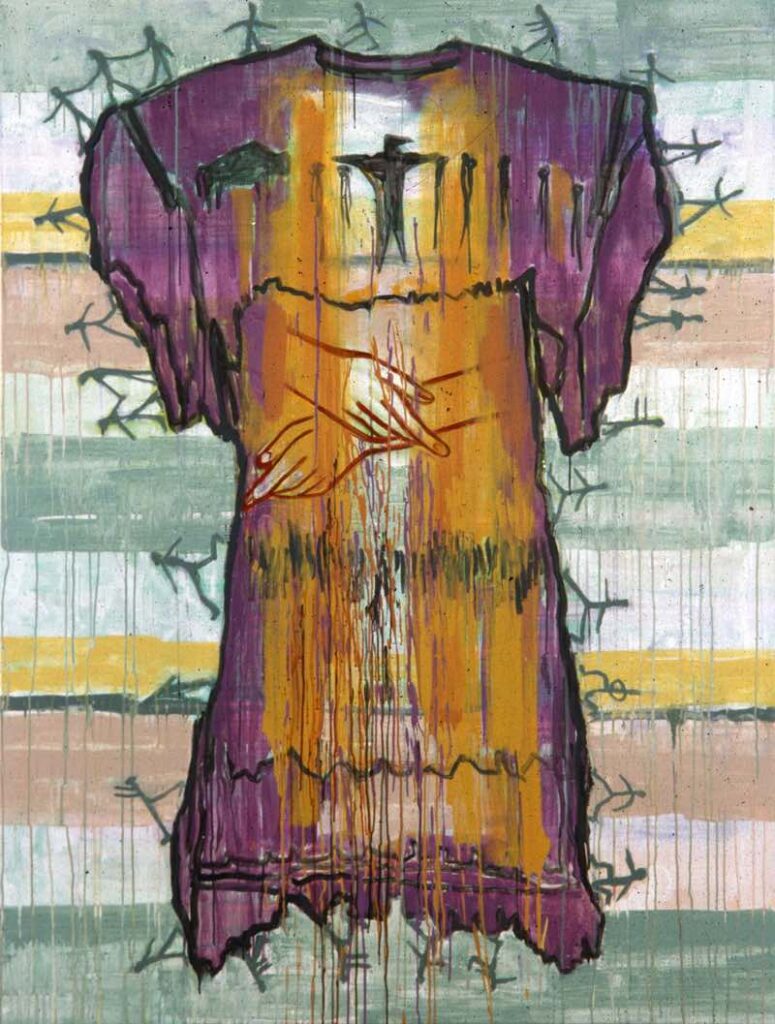
Smith’s artistic style mixes American Indian art with European techniques. It addresses issues of today, such as human rights, environmental issues, and tribal politics. She uses a wide variety of media and incorporates elements of collage, printmaking, and painting into her contemporary Native American artworks.
- A lesson on Jaune Quick-to-See Smith’s Who Leads? Who Follows? is available in the Curated Connections Library. Members, get the lesson here. Or, click here to join to get this and other lessons on other contemporary Native American artists.
- See more Jaune Quick-to-See Smith art on her website.
Sadie Red Wing
Cultural Affiliation: Lakȟóta/Dakȟóta, enrolled in Spirit Lake Sioux Tribe, (Her Lakota name is Her Shawl is Yellow)
Sadie Red Wing is a graphic designer and teacher who works to preserve the visual languages of sovereign Native American Tribes and restore “visual sovereignty,” (Source) as well as decolonizing design. As a pioneering graphic designer, she continuously works to remove Native American stereotypes from modern-day culture, as well as “giv[e] voice and context to underrepresented communities whose rich visual languages have often been subsumed or ignored by mainstream design’s bias toward Western modes of communication.” (Source)
As a teacher, she forces the indigenous perspectives in westernized curriculum, specifically in regards to design education and visual communication.
She says this about her work “I hope to pull the Indigenous demographic out of the ‘primitive’ stereotype and create a foundation that allows Native Americans to contribute to contemporary trends in graphic design and design research.” (Source)
If you cannot be comfortable in your own skin, it reflects in your work, studies, and communication.
Sadie Red Wing
Sadie Red Wing Art

Visual Essay was created out of a desire for the artist to preserve and communicate the Lakȟóta visual language and her cultural perspective with others. Each element represents a different aspect of the artist’s life, journey, and cultural heritage by using Lakȟóta symbols. Each Tribe has its’ own visual language, which is unique to it. These unique elements are used to distinguish who they are from among other tribes. The artist created Visual Essay as part of her graduate school design portfolio at North Carolina State University in Raleigh, North Carolina.
- A lesson on Sadie Red Wing’s Lakȟóta + Dakȟóta Visual Essay is available in the Curated Connections Library. Members, get the lesson here. Or, click here to join to get this and other lessons on other contemporary Native American artists.
- See more Sadie Red Wing art on her website.
Did you share these artworks with your students? We’d love to hear how it went. Comment below or tag us on social media @artclasscurator.

